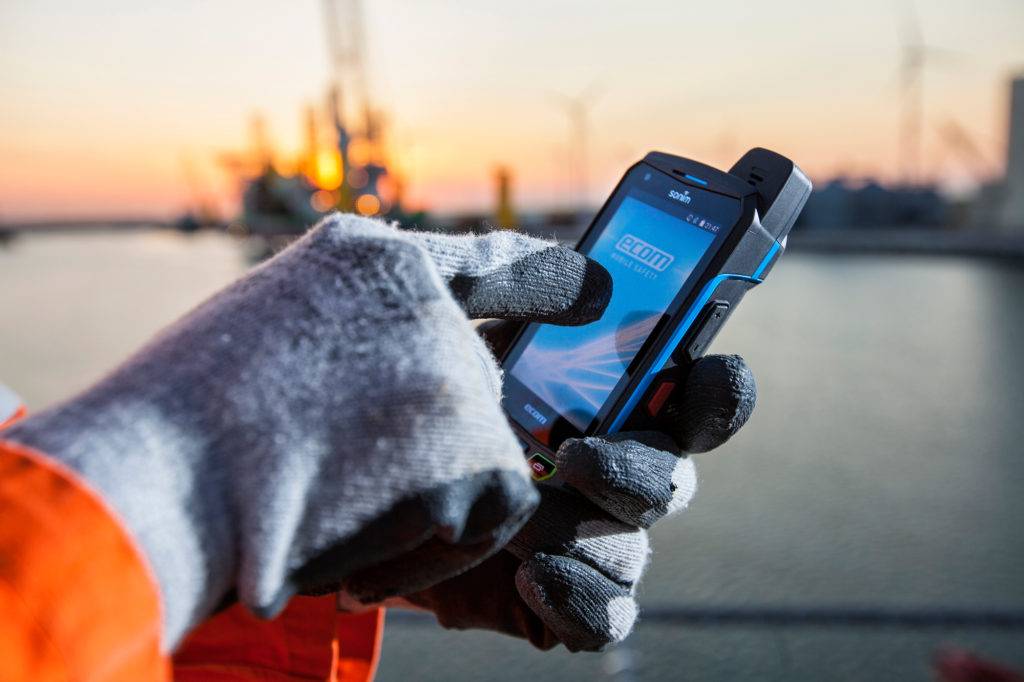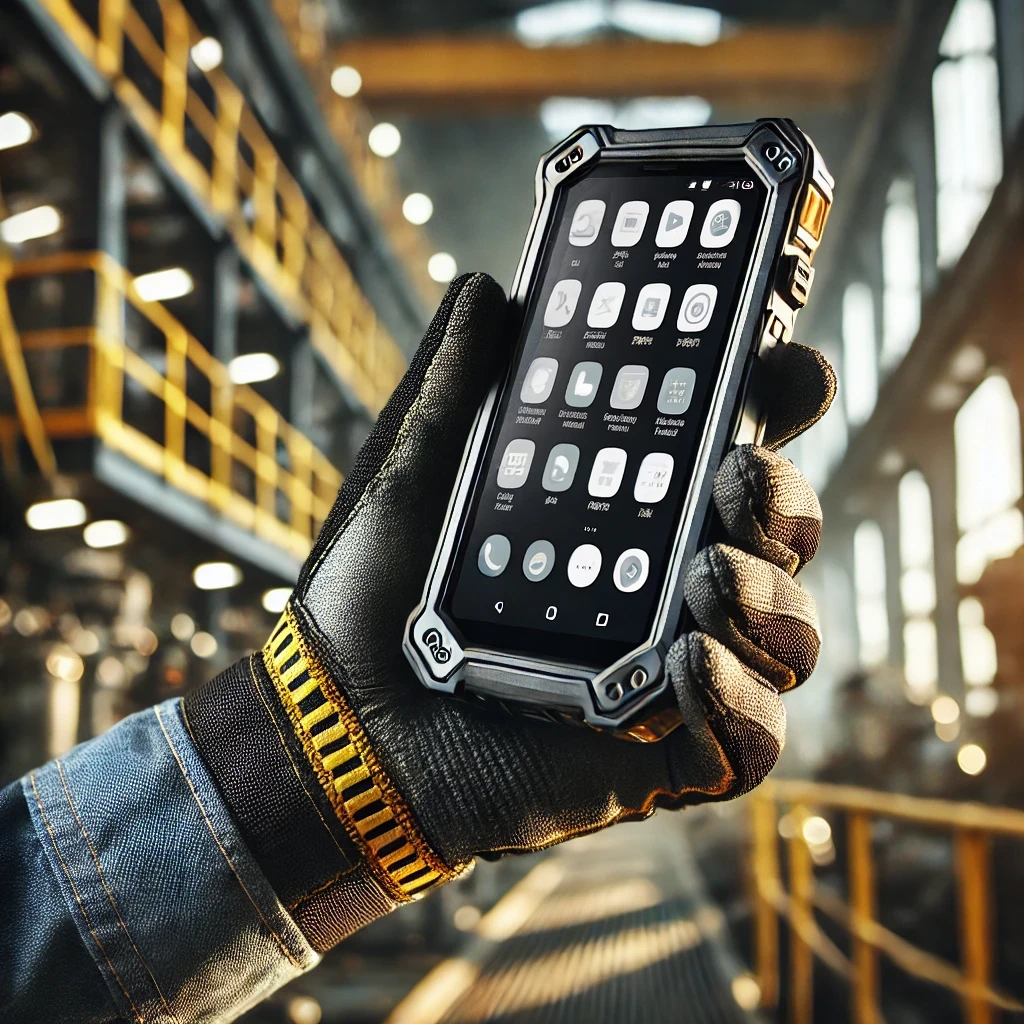
When working in hazardous environments such as oil refineries, chemical plants, or mining sites, communication is crucial. However, using standard electronic devices in these areas can be dangerous due to the risk of ignition from electrical sparks or high-energy circuits.
This is where intrinsically safe and explosion-proof smartphones come in. Both are designed to operate safely in hazardous areas, but they serve different purposes. Choosing the right one depends on the specific classification of the work environment, regulatory requirements, and the level of protection needed.
In this guide, we’ll compare intrinsically safe smartphones and explosion-proof smartphones, highlight their differences, and help you decide which one is best for your workplace.
Understanding Hazardous Area Classifications
Hazardous locations are classified based on the presence of flammable gases, vapors, or dust. These classifications dictate the safety standards required for electronic equipment.
Explosive Zone Classifications
| Zone | Definition | Common Industries |
|---|---|---|
| Zone 0 | Explosive gas is present continuously or for long periods | Oil refineries, chemical plants |
| Zone 1 | Explosive gas is likely to occur during normal operations | Paint booths, fuel storage |
| Zone 2 | Explosive gas is unlikely but possible during operation | Fuel transfer areas, spray booths |
| Zone 20 | Combustible dust is present continuously | Flour mills, coal plants |
| Zone 21 | Combustible dust occurs occasionally | Textile mills, food processing |
| Zone 22 | Combustible dust is unlikely but possible | Warehouses, sawmills |
To comply with safety regulations, mobile devices used in these zones must be certified under ATEX, IECEx, or NEC standards.

What Are Intrinsically Safe Smartphones?
Intrinsically safe (IS) smartphones are designed to limit electrical and thermal energy to prevent ignition in hazardous environments. Instead of relying on heavy enclosures, these devices ensure that any electrical spark or heat generated remains below the ignition threshold of the surrounding atmosphere.
Key Features of Intrinsically Safe Smartphones
- Designed for Zone 0 & Zone 1 environments
- Lightweight and portable, ideal for field use
- Lower maintenance costs compared to explosion-proof devices
- Certified for ATEX, IECEx, and NEC compliance
Best For
- Oil & Gas Industry: Frequent exposure to flammable gases
- Chemical Plants: Work in highly volatile atmospheres
- Mining Operations: Underground hazardous zones
Example: Ecom Smart-Ex 03 – An ATEX-certified intrinsically safe smartphone with 4G LTE, GPS, and push-to-talk capabilities.
What Are Explosion-Proof Smartphones?
Explosion-proof smartphones are built with reinforced, heavy-duty enclosures that can withstand an internal explosion, preventing it from igniting the surrounding atmosphere. Unlike intrinsically safe devices that prevent ignition entirely, explosion-proof devices contain any explosion within their structure.
Key Features of Explosion-Proof Smartphones
- Designed for Zone 1 & Zone 2 environments
- Heavy-duty, rugged construction
- More resistant to impact, water, and dust
- Requires periodic maintenance for seals and enclosures
Best For
- Construction Sites: Where equipment durability is a priority
- Industrial Facilities: Moderate risk of explosive atmospheres
- Manufacturing Plants: Areas with occasional exposure to hazardous materials
Example: Sonim XP8 – A rugged explosion-proof smartphone built for tough environments.
Comparison Table: Intrinsically Safe vs. Explosion-Proof Smartphones
| Feature | Intrinsically Safe Phones | Explosion-Proof Phones |
|---|---|---|
| Protection Mechanism | Limits energy output | Contains explosion within housing |
| Best For | Zone 0, Zone 1 (high-risk) | Zone 1, Zone 2 (moderate risk) |
| Size & Weight | Lightweight | Heavy, bulkier |
| Maintenance | Lower | Requires regular inspections |
| Certification | ATEX, IECEx, NEC | ATEX, IECEx, NEC |
| Durability | Standard rugged | Heavy-duty |
How to Choose the Right Smartphone for Your Industry
The decision between an intrinsically safe and an explosion-proof smartphone depends on your work environment and the level of risk involved.
Choose an Intrinsically Safe Smartphone If:
- You work in Zone 0 or Zone 1 environments
- You need a lightweight, portable device
- Your work involves frequent field movement
- Compliance with strict ATEX/IECEx standards is required
Choose an Explosion-Proof Smartphone If:
- You work in Zone 1 or Zone 2 areas with moderate risks
- You need a rugged, impact-resistant phone
- You prefer a device with extra physical protection
- Your workplace requires sealed enclosures to prevent explosions
Still not sure? Contact our safety experts at Intrinsically Safe Store to help you find the best-certified smartphone for your needs!
Top Recommended Intrinsically Safe Smartphones
If you need an ATEX-certified smartphone, here are some of our best-rated intrinsically safe devices:
- Ecom Smart-Ex 02 – Zone 1 & 2 certified, Android OS, 4G LTE, GPS, and push-to-talk
- Bartec Pixavi Phone – ATEX Zone 1 certified, water-resistant, high-resolution camera
- i.safe Mobile IS530.1 – Rugged IS smartphone, ideal for oil & gas environments
For explosion-proof smartphones:
- Sonim XP8 – Military-grade explosion-proof phone, ultra-rugged design
- Caterpillar Cat S61 – Built-in thermal imaging, laser-assisted measuring
Explore our full collection of hazardous-area smartphones here.
Conclusion
Both intrinsically safe and explosion-proof smartphones are crucial for safe communication in hazardous areas. The right choice depends on your industry, zone classification, and safety requirements.
- Choose Intrinsically Safe Phones for high-risk environments (Zone 0 & 1).
- Choose Explosion-Proof Phones for moderate-risk areas (Zone 1 & 2).
Need help choosing the right phone? Contact our team today or browse our selection of certified hazardous-area smartphones. Your safety is our priority!
Shop Intrinsically Safe Smartphones Now



























